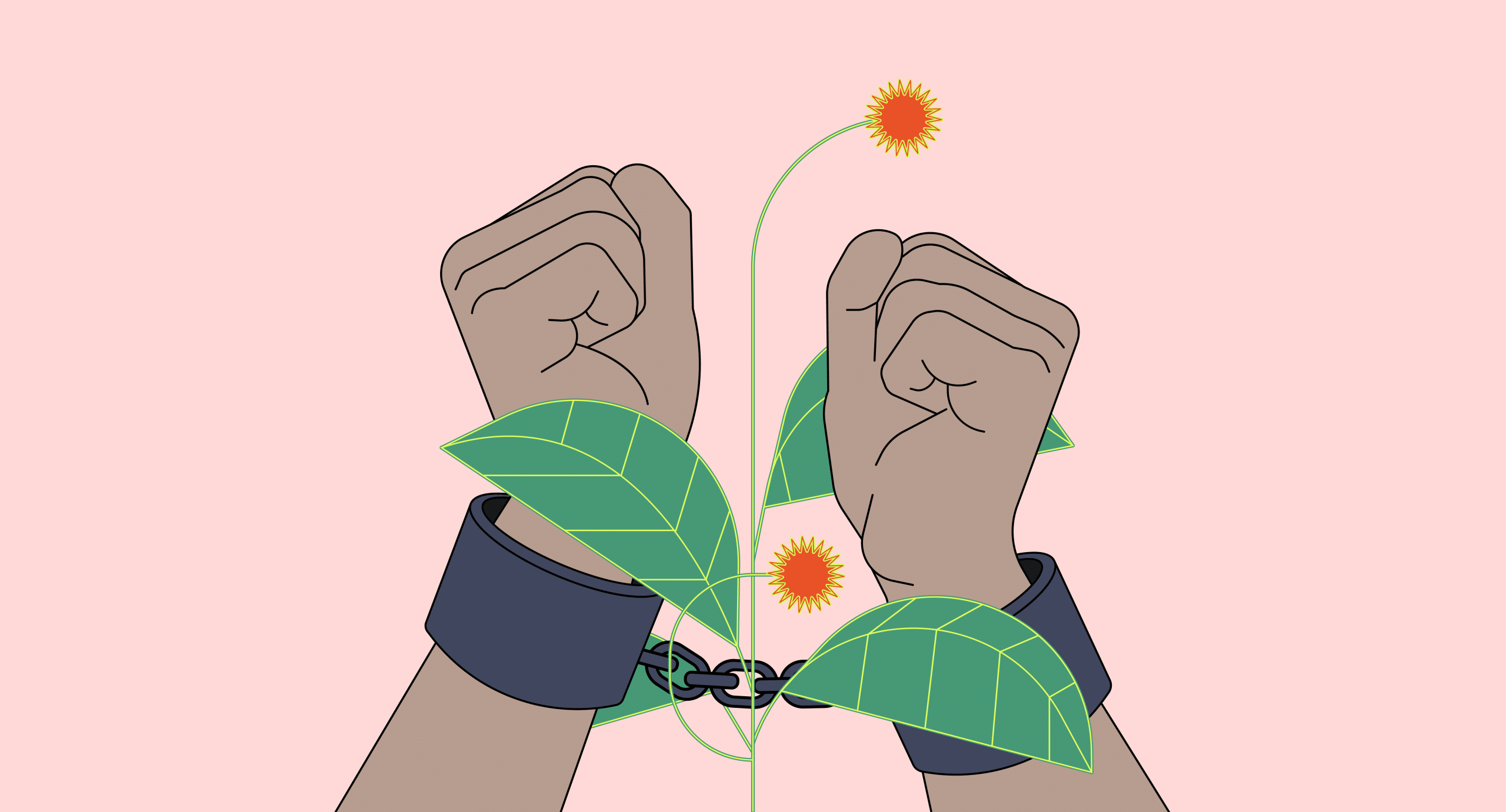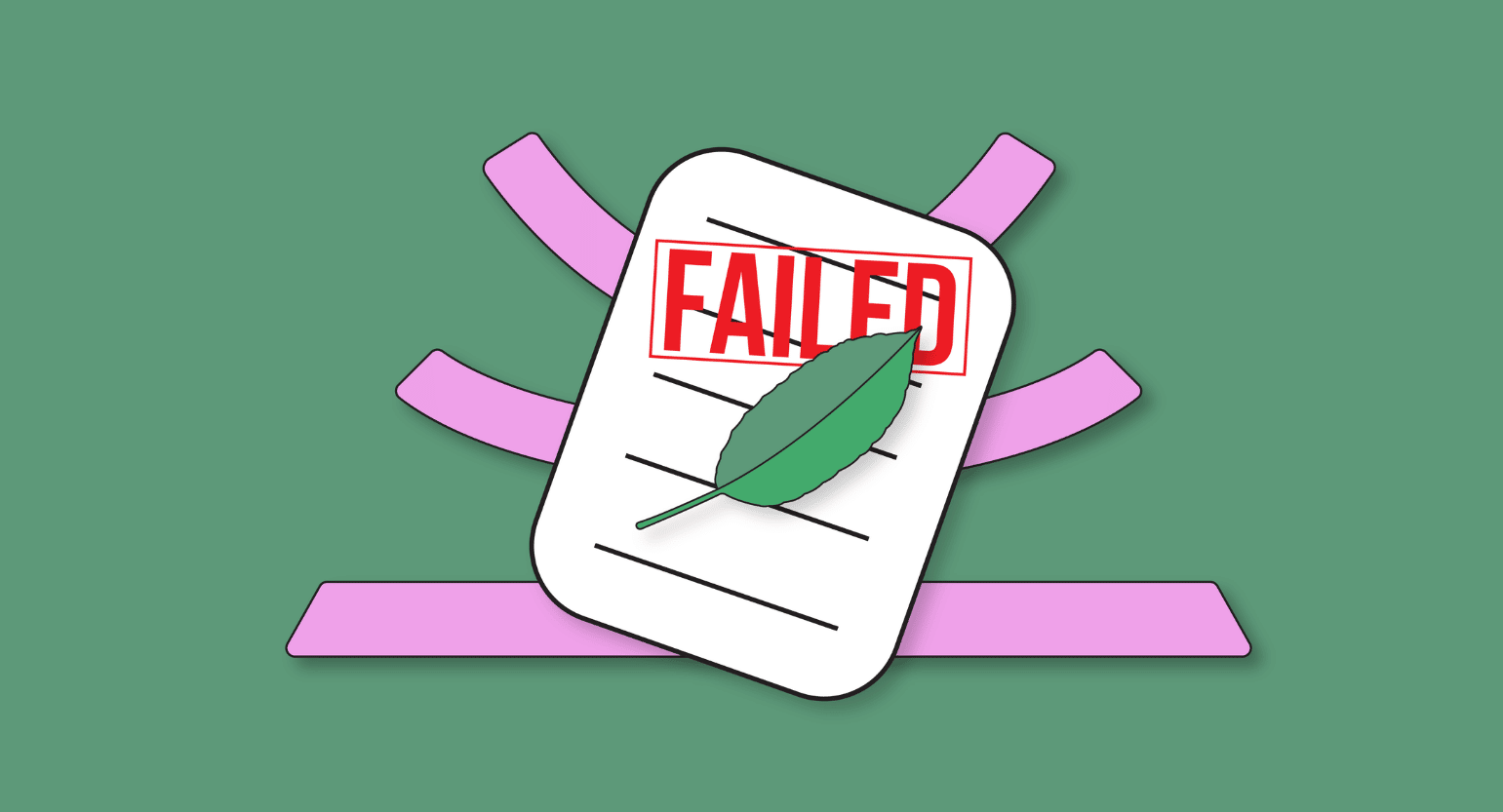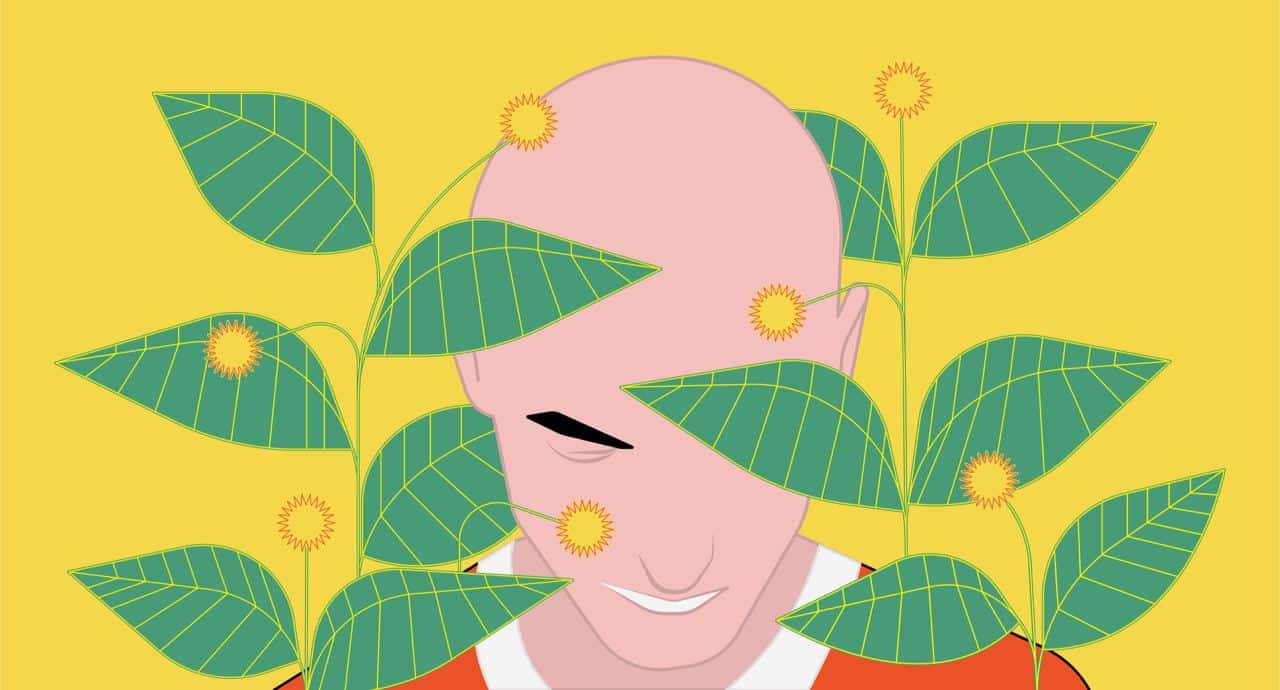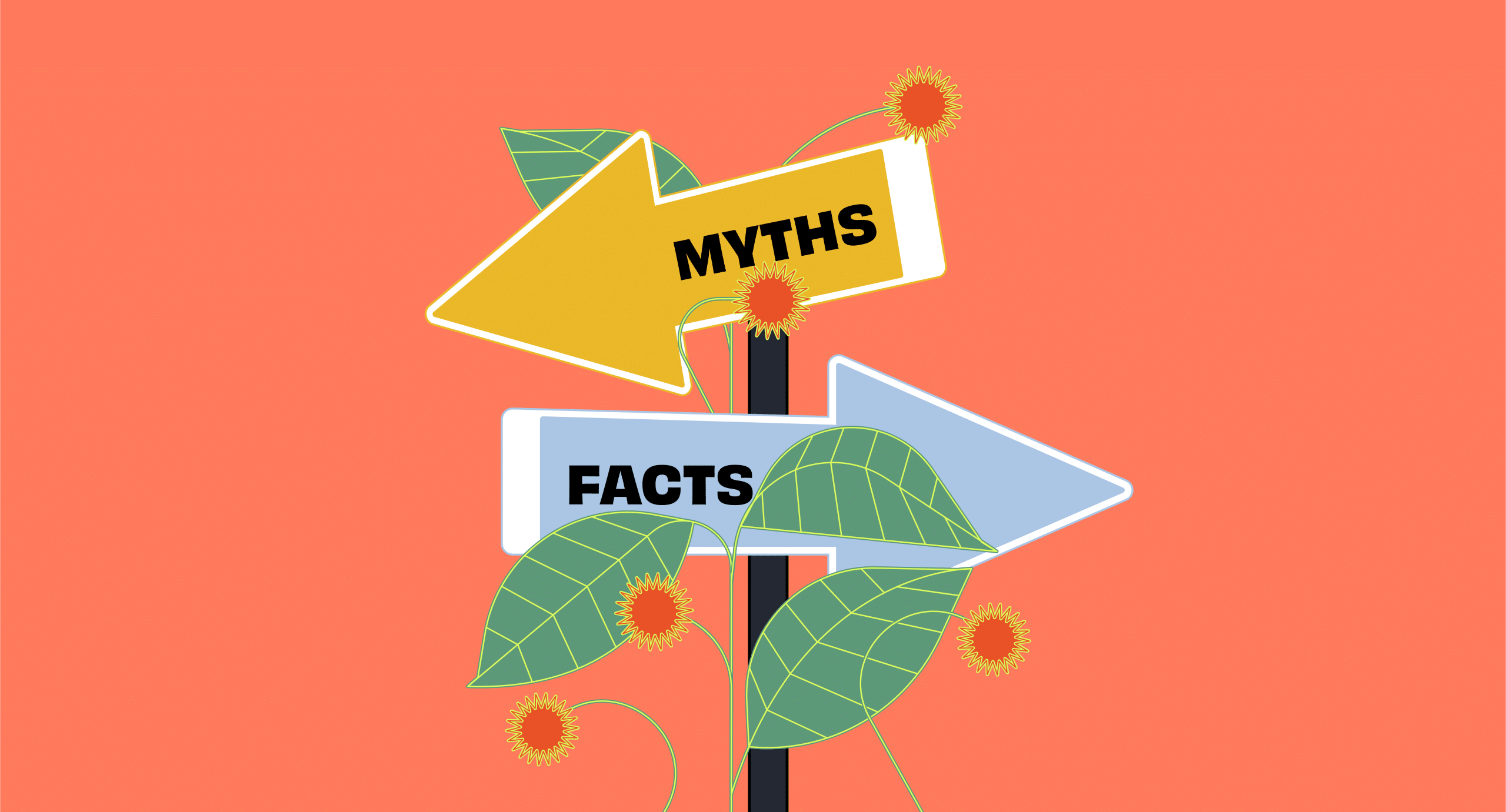Is Kratom Addictive?
Yes, kratom can become addictive. Any substance that offers a release from pain, depression, or other forms of discomfort can become addictive if they aren’t used responsibly.
Kratom refers to the leaves of a tree by the name of Mitragyna speciosa. It’s a supplement that’s been used for hundreds of years and provides several different benefits that range from stimulation to sedation and pain relief.
The active ingredients include over 45 alkaloids, but the primary ones are mitragynine and 7-hydroxymitragynine. They work by activating many receptors, including the opioid receptors in the brain. This system is involved in regulating pain, mood, muscle relaxation, and much more.
Some of the active alkaloids also target the adrenergic systems, which gives the plant its stimulating activities. This works the same way coffee works (kratom and coffee are closely related). [1]
People who abuse kratom can become dependent on it over time, though it takes several months of consistent and heavy kratom use to reach this point.
There are two stages to kratom addiction:
Stage 1: Psychological Dependence
Addiction to kratom doesn’t start out with any physical symptoms. If you miss a dose of kratom, you’re not going to feel sick. Instead, you’re going to crave the experience or benefits kratom offers you. This is the same for addictions to other substances or activities (like sex or gambling). You don’t physically need the substance, but you seek it out because of how it makes you feel.
Kratom offers a release from pain, anxiety, insomnia, and depression. So it makes sense that users want to take more kratom once it’s worn off to escape these uncomfortable experiences.
Stage 2: Physical Dependence
After several months, physical addiction can form. When this happens, your body adapts to the presence of the substance and alters its chemistry to take it into account. Your “normal” state of homeostasis (balance) assumes kratom will be in the system. When it’s not, you fall out of balance, which causes symptoms of withdrawal.
Physical dependence is more than just psychologically craving the experience. You actually feel sick without taking it.
This stage of addiction is harder to treat because it can feel pretty uncomfortable when you stop taking kratom.
Luckily, kratom withdrawal is very mild, but it’s tolerable and generally self-treatable compared to other substances [2]. It can leave you feeling irritable, anxious, and uncomfortable. It lasts for a few days but will eventually go away as your body adjusts.
This is a far cry from the fevers, cold sweats, and seizures that occur while withdrawing from prescription pain meds or illicit opioids.
Kratom Addiction: Science vs. Misinformation
The best thing we can do is to promote the facts so users are aware of the risks that come with kratom use. It’s a powerful and potentially life-saving medicine for many, but it needs to be respected [3].
Kratom Misinformation on Addiction
There’s a lot of misinformation about kratom on both sides of the equation.
If you look at websites that are supposed to provide unbiased health information — like WebMD — you’ll find all kinds of factually incorrect information about how kratom is as addictive, if not more addictive, than prescription pain medications. This simply isn’t true, and there’s never been any data to back this up. [4]
Unfortunately, even deaths involving kratom are poorly represented and rarely tell the whole story. Most cases are linked to other substances (fentanyl was found in 62% of the cases) and cannot be attributed solely to kratom [3].
In fact, research strongly suggests the opposite — which we discuss below.
On the other side, some kratom vendors and blogs claim that kratom has no addictive qualities whatsoever. This is also factually incorrect and not supported by science.
Uneducated users, believing that kratom will never cause an addiction, may begin to use extremely high doses every day and develop a serious habit that’s hard to kick.
Kratom Addiction: What Does the Research Show?
In order to get an accurate look at kratom addiction, we need to look at the available research.
1. Small Doses & Limited Use Can Prevent Addiction
The fact of the matter is that if you take large doses of kratom every single day, multiple times a day — you could eventually become dependent, but studies show these things don’t consistently cause addiction [2].
Researchers are still unsure of what causes kratom addiction, but it’s pretty clear that limiting your use helps prevent it [5].
2. Kratom Addiction Is Less Severe Than Opioid Addiction
At the same time, an addiction to kratom is different from prescription pain pills. It takes several months to become addicted (compared to a few weeks with opioids), and withdrawal symptoms from kratom are similar but significantly milder.
A 2023 study concluded that kratom is a potential treatment for pain, opioid withdrawal, and possibly substance use disorders (SUDs) due to its selective signaling at opioid receptors and the poly-pharmacology of its alkaloids. Based on pre-clinical studies, kratom “shows little to no addiction potential” and could be safer than standard treatments. [3]
3. Kratom Is Relatively Safe, Even In Large Amounts
Even very large doses of kratom are fairly safe for a number of reasons.
First, it’s hard to take a lot of kratom at once — it causes nausea and vomiting. This helps limit the amount you can put in your body.
Second, it would take a “tremendous amount of kratom [powder]” to reach a lethal level [3]. The lethal dose (LD50) of kratom in animal studies was 200–960 mg/kg for mitragynine and 200–591 mg/kg for total alkaloids.
Third, kratom is unlikely to cause respiratory depression, the leading cause of death by overdose.
Mitragynine and 7-hydroxymitragynine show selectivity for G-protein signaling but don’t recruit β-arrestin to any measurable degree — activating G-proteins but not β-arrestin allow for pain relief with fewer side effects like respiratory depression [6]. However, new research suggests β-arrestin activation plays less of a role than we once thought [7].
Related: Kratom Withdrawal vs. Opioid Withdrawal
4. Anecdotal Evidence Suggests a Generally Low Instance of Addiction
A 2017 survey of 8,049 kratom users [8] found that just under 21% reported negative effects — gastrointestinal being the most common. Less than half (43%) of that 21% said they suffered from withdrawal 12-48 hours after using kratom. About 40% ranked the severity of the withdrawal symptoms a 2, and 36% ranked them a 3 on the 5-point Likert scale (1 is very severe, and 5 is not severe at all).
Other surveys come to similar conclusions — if you use it responsibly and pay attention to your body, you can reap the benefits with minimal risk [5].

Warning Signs of Kratom Addiction
If you’re unsure of whether you or your loved ones are addicted to kratom, there are a few signs and symptoms to look out for. Here are some of the most obvious signs of kratom addiction.
- Continuing to use kratom despite the emergence of problems in your life or adverse consequences
- Spending unreasonable amounts of money on kratom
- Repeatedly attempting to stop using kratom but being unable to
- Losing interest in regular activities, socializing, etc.
- Having difficulty controlling or regulating the amount that you take or your dosing frequency
- Changes in daily habits, such as sleeping or eating
- The development of tolerance and withdrawal symptoms
- Lying or keeping secrets regarding kratom use
- Craving kratom throughout the day or being unable to function or enjoy life without it
How Long Does It Take to Get Addicted to Kratom?
It generally takes several weeks or months to become physically addicted to kratom. By taking at least a few days off of kratom each month, you may be able to avoid physical dependence and addiction altogether.
Different people will have different experiences regarding developing a kratom addiction. Some people find that they develop an addiction and tolerance relatively quickly. Others can build a tolerance and use kratom on a regular basis for months without actually experiencing withdrawal symptoms at all.
Many different factors will affect how long it takes for you to get addicted to kratom. However, the best thing that you can do is listen to your body.
If you start developing tolerance to kratom, then that means you’re becoming dependent. Rather than playing with fire, it’s best to reduce the amount that you’re using or reduce the frequency of your use.
Related: How Long Does Kratom Stay In the System?

Factors That Affect Kratom Addiction
There are lots of factors that can impact your chances of becoming addicted to kratom. The dose you take, the frequency of use, strain selection, and genetic factors can all influence how likely you are to become addicted to kratom.
The Impact of Dosage on Addiction
One of the biggest factors that will determine how quickly you become addicted is your dosage. Simply put, if you’re taking huge doses, you’re going to get addicted faster [5].
The bigger the dose, the more your body has to compensate for the effects of the kratom. It will downregulate faster, and the results will be more severe.
Related: Kratom Dosage Guide
The Impact of Frequency on Addiction
Dosing frequency is equally as important as the dose itself. If you’re taking multiple doses per day, then you’re much more liable to develop an addiction than you would be if you were taking a single dose [2].
If you’re taking kratom all day, even at small doses, then your brain and body don’t get a break from the alkaloids. The only time that you’re going to be functioning without kratom active in your body will be during your sleep.
On the other hand, if you take one dose daily — even if it’s a relatively large dose — your body has much more time to return to baseline. You will likely be able to avoid the process of downregulation for longer if you’re just using a single dose.
However, even with just a single daily dose, it’s possible to build up a significant tolerance and dependence. The only way to really avoid addiction is to avoid daily use or to supplement with potentiators.
You can reduce this risk by taking breaks from kratom. It’s best to, at a minimum, take two days off every week and one week off every month.
Related: Needing a Break? Here Are the Top 10 Kratom Alternatives
Previous Opiate Addiction
The body has an interesting mechanism by which it seems to familiarize itself with addiction and dependence. If you’ve been addicted to opioid drugs in the past, then you may become addicted to kratom much quicker than you would otherwise [2].
Though one of kratom’s main uses is to help manage withdrawal symptoms of opioids and other substances [3].
Kratom Strain & Product Use
There is some speculation that rotating kratom strains can offset the development of addiction, although there’s not much scientific basis for this.
The idea is that you’ll be switching up the alkaloids that your brain and body are exposed to. This could theoretically slow the process of downregulation.
However, since most of the alkaloids in kratom work on the same systems, the benefits of strain rotation might not be that obvious. You’re still going to be introducing mitragynine and 7-hydroxymitragynine into your body.
However, white strains — which have a lower concentration of 7-hydroxymitragynine — are often reported as being less addictive than red and green strains, which have higher concentrations, particularly the red.
7-hydroxymitragynine is the most potent alkaloid in terms of its effects on the opioid system [4], so choosing strains with less of this alkaloid may actually deter dependence.
It’s also important to note that some products, especially ‘enhanced’ strains or extracts, can really speed up the process of addiction. For example, strains like Ultra Enhanced Indo contain a much higher alkaloid content than the average strain and can cause addiction much quicker.
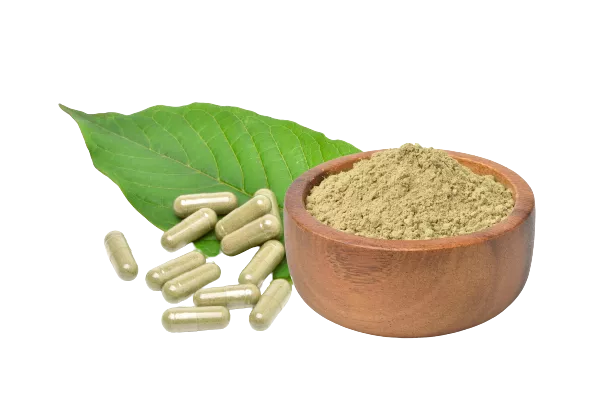
How Does Kratom Cause Addiction?
There are several mechanisms by which kratom can cause addiction. It’s important to understand how these processes occur in the body.
Kratom & the Opioid System
The main reason that kratom can cause addiction is its influence on opioid receptors. The opioid system is the body’s main line of defense against pain. We produce opioids naturally that are called endorphins, which work as the body’s natural painkilling substances.
Supplements like kratom also work on this system to provide similar pain relief. However, the body begins to respond when the opioid system is constantly bombarded with compounds that activate its receptors.
One of the main ways that it does this is through a process known as downregulation — your body’s attempt to remain in a state of balance. When it detects that a certain system is overstimulated, it tries to counteract the perceived imbalance.
It does this by basically dialing down the receptors in the system, in this case, the opioid system. When this happens, you’ll become less sensitive to kratom. This is called building tolerance.
If you continue using it despite becoming desensitized to kratom, your body will become physically dependent. It will become so reliant on kratom for stimulating the opioid system that it won’t put much effort into producing opioids on its own, in addition to downregulating the system.
If you suddenly stop using kratom once you’ve reached this point, then you’re likely to experience withdrawal symptoms.
Related: Is Kratom An Opioid?
Kratom & Dopamine
Kratom also has a strong influence on dopamine [9].
The dopamine system is part of our reward pathway. Dopamine itself is responsible for things like managing our mood, as well as sensations of reward and pleasure. Dopamine is also involved with libido, energy, and many other important things.
Because of its powerful impact on the dopamine system, kratom can also cause downregulation. This can lead to physical dependence. When you’re dependent on a dopamine-boosting supplement, you may find yourself unhappy, lethargic, and unmotivated when you’re not using it.

Kratom Withdrawal: Signs & Symptoms
Withdrawal symptoms are a collection of unpleasant physical and psychological problems that emerge when your body tries to function without a substance that it’s addicted to.
It’s important to note that kratom withdrawal symptoms are not necessarily dangerous. If you have used pharmaceutical or illicit opioids before, you’ll already be familiar with opioid withdrawal. Kratom withdrawal has similar symptoms but is much less intense [10].
In fact, many people use kratom to overcome the withdrawal of more potent and dangerous synthetic drugs like morphine and heroin. Because kratom works on many of the same receptors, it can temporarily help people overcome withdrawal symptoms. Once the opioid withdrawal period is over, they can then withdraw from kratom.
However, if you have never been through withdrawal before, the symptoms can seem shocking or unpleasant.
Most people with mild-to-moderate kratom habits report that withdrawal symptoms are similar to battling a cold or flu.
Kratom also causes a number of psychological withdrawal symptoms. Many report these symptoms as more intense and longer-lasting than physical symptoms. Compared to typical opioid withdrawal, physical symptoms are significantly less challenging, and psychological symptoms are far more obvious.
Psychological Withdrawal Symptoms
These are some of the most common and significant psychological issues experienced by people going through kratom withdrawal.
Depression
One of the most common symptoms associated with kratom withdrawal is depression. People who have gone through withdrawal from both kratom and synthetic opioids often report that the depression is far more severe with kratom withdrawal. This is possibly due to the more potent interaction that kratom has with the dopamine system.
Think of it this way: each day, kratom causes you to experience an elated or euphoric mood boost. Or, at least, it did during the earlier stages of your use.
Eventually, you become accustomed to this state of euphoria. After this becomes the baseline, many people start to chase the high. However, the euphoria becomes evasive. Instead, people find that they’re simply unhappy or agitated without kratom and that they need it to feel pleasure or joy.
Agitation & Restlessness
A number of people experience mental restlessness when they’re going through kratom withdrawal. They are plagued with the sensation of needing to do something but lack the energy to do it.
Anxiety
There is a phrase used among herbalists that goes something like this. “Any problem that you’re covering up with herbal medicine will affect you much worse if you refuse to deal with it.”
This is true with kratom, which many people use to manage anxiety. If you refuse to deal with your anxiety in a permanent manner with therapy or other options, it won’t simply get better. It’ll get worse, but you won’t realize it because you’ll be medicated with kratom.
The disturbances in your brain chemistry caused by dependence can also cause anxiety. In fact, many people who have never experienced anxiety reported that they developed anxiety problems after reckless kratom use.
Lack of Motivation
Another issue that people often face after excessive kratom use is a lack of motivation. Opioid downregulation can sap you of the will to achieve things, and a lack of dopamine can leave you feeling uninspired and dejected.
Physical Withdrawal Symptoms
There are a number of physical withdrawal symptoms associated with kratom withdrawal. Some are more serious than others. For most people, symptoms won’t be much more serious than those of a mild flu.
Allergy-Like Symptoms
Many people experience the classic symptoms of an allergy when they are going through kratom withdrawal. This might mean having a runny nose, sneezing a lot, watery eyes, or excessive yawning.
Lethargy and Fatigue
Lethargy and fatigue are two of the most common kratom withdrawal symptoms. Many people are surprised to learn that they’ve become dependent on kratom as their primary source of energy. When they suddenly stop taking it, they have no energy to do anything.
Insomnia
Many people find that they are unable to get to sleep during kratom withdrawal. The dopaminergic imbalance causes a lack of energy, and yet they lack the ability to drift off to sleep.
If insomnia leads to sleep deprivation, a number of other issues can emerge. Whether caused by withdrawal or not, sleep deprivation can cause emotional disturbances, hallucinations, delusions, and cognitive changes.
Restless Legs Syndrome
Restless Legs Syndrome, or RLS, is one of the most irritating kratom withdrawal symptoms. It’s a sensation of restlessness and agitation that lies deep within your muscle tissues. RLS doesn’t just affect the legs, although this is the most common place for it to occur.
RLS tends to make people incapable of finding comfort or rest. The sensation of agitation is so intense that people find that they must constantly jerk or move their muscles to avoid it.
Muscle & Bone Aches
Regular opioid use can lead to a condition called ‘hyperalgesia,’ which is basically the opposite of analgesia (pain relief). Hyperalgesia increases your sensitivity to pain.
Because of this, one of the symptoms of opioid withdrawal is pain. This most commonly manifests as aches that can be felt in the muscles and bones.
Post-Acute Withdrawal Syndrome
One of the most frustrating aspects of kratom addiction is post-acute withdrawal syndrome, or PAWS.
PAWS tends to set in after the initial physical withdrawal symptoms have abated. PAWS symptoms are usually psychological in nature and may include things like depression, anxiety, and anhedonia (an inability to find pleasure).
Many factors can contribute to the symptoms of PAWS, but they’re generally the result of changes in brain chemistry caused by long-term substance abuse.
PAWS symptoms do go away, but it may take a longer period of time. Seeking the help of a therapist can help, as can engaging in activities that can restore brain function, such as meditation.

What to Do if You’re Addicted to Kratom
The best way to manage a kratom addiction is to taper down your use — regulate your dose size and avoid taking it every day — or avoid it altogether.
If you’re already addicted to kratom, or if you know someone who is, there are a number of solutions you might want to take advantage of.
Check out our guide to quitting kratom for more information.
Support Groups
There are lots of support groups for people with kratom addiction, especially online. Websites like Reddit have entire communities of people dedicated specifically to helping people manage kratom addictions.
Visit the quitting kratom subreddit to learn more.
Rehab
If your addiction is serious and you’re not able to overcome it on your own, there’s always rehab. Rehab centers will hook you up with therapists, group meetings, and education that you can use to overcome your addiction.
There are a few different rehab models you can check out. Some involve staying at a facility for a few weeks to receive treatment 24/7 — others involve an at-home model, which involves online meetings with doctors and psychologists and access to local support groups.
Address the Root Cause
Underneath all addictions is a deeper trauma or health issue that needs to be explored. Nobody chooses to become addicted to something. It happens gradually as an attempt to soothe or escape a deeper pain or trauma.
It’s important to seek out methods of identifying this underlying cause by asking yourself what it is kratom does for you. What pain or issue is it solving that makes you want to keep using it?
For many people, the answer to this is physical pain, but for others, it could be something much deeper. Visiting a mental health therapist is invaluable for learning to identify with this pain, bringing it to the surface, and integrating it. This process isn’t as straightforward as it sounds and can take many years to get to a point where a substance is no longer needed to provide this sense of relief — but it’s the best way to cure any addiction long-term.
Also see: How to Taper Off of Kratom: A Complete Guide for Becoming Kratom-Free
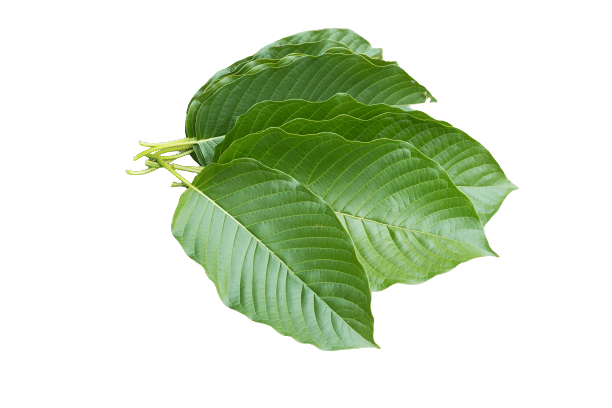
Summary: Kratom Addiction Is Avoidable & Tolerable
Kratom addiction is a very real issue that should be acknowledged and understood properly. Kratom addiction is not life-threatening and is certainly less severe than addiction to opioid medication. However, it’s still an addiction and should be treated as such.
Understanding and preparing for addiction and the subsequent withdrawal symptoms can help you get a handle on your experience with kratom. If you’re too far in, there’s still hope: support groups and rehab centers have helped thousands of people beat kratom addiction.


